A couple of words about myself first. I’m a hobbyist photographer with about a decade of experience. I come from the “digital generation”. My first camera was a Panasonic FZ-something-superzoom I acquired somewhere about the year 2004. Ouch. This makes it 16 years old. Quite a painful discovery that is…
I tried film once before, in the mid 2000s, but failed miserably, as I lacked knowledge and experience. I also prefer computer screen to printed images, and options for scanning film were limited here back then. But I returned to the idea about a year ago and now shoot film almost exclusively. So now I want to share the story of the troubles that I’ve created for myself and attempts to overcome some of them…
Stage I: Medium Format TLR
One day I woke up with an idea to start shooting film. To make things worse, the next moment I’ve decided to do it the hard way. I want a fully manual camera. No electronics and no automation. And at least medium format. To hell with half-measures! A couple of hours with an online auction, travel to the train station to meet the seller and the deal was done. I had a Mamiya C220 (pictured above) complete with 135/4.5 lens. The seller asked if I have experience with MF cameras and I answered “yes”. I’ve read the manual and watched YouTube tutorials… What could possibly go wrong?
Expected Trouble:
I thought the biggest problem will be light metering. I used to shoot in aperture priority mode, applying exposure correction if necessary. How can I do it myself if I can’t even see the results right away? I installed a light meter app on my phone, took a deep breath and started shooting. When I received the first roll from the lab, I was expecting my shots to be all white or all black. Or, most likely, all weird. To my surprise, they were all properly exposed. And nice looking. One roll of 12 images had more “keepers” than a hundred digital shots I made in the same session. Wow.
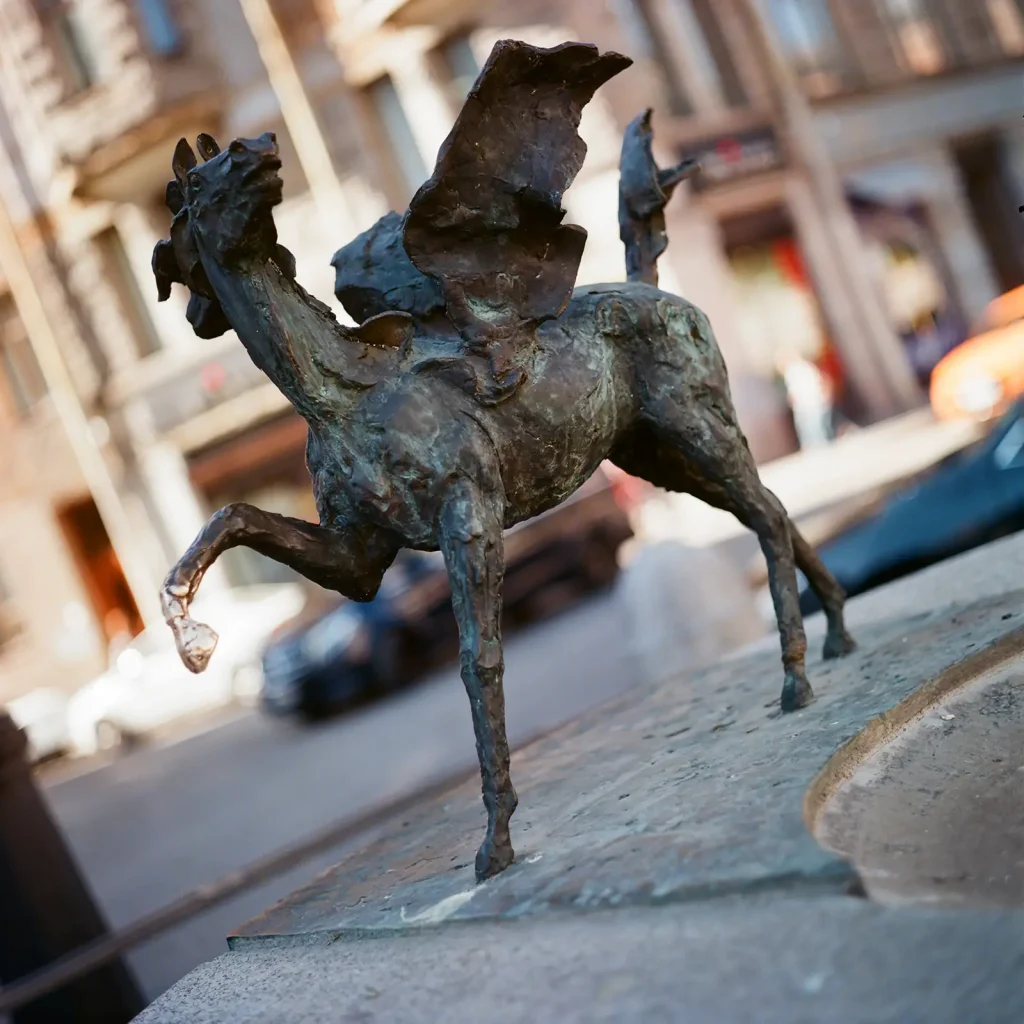

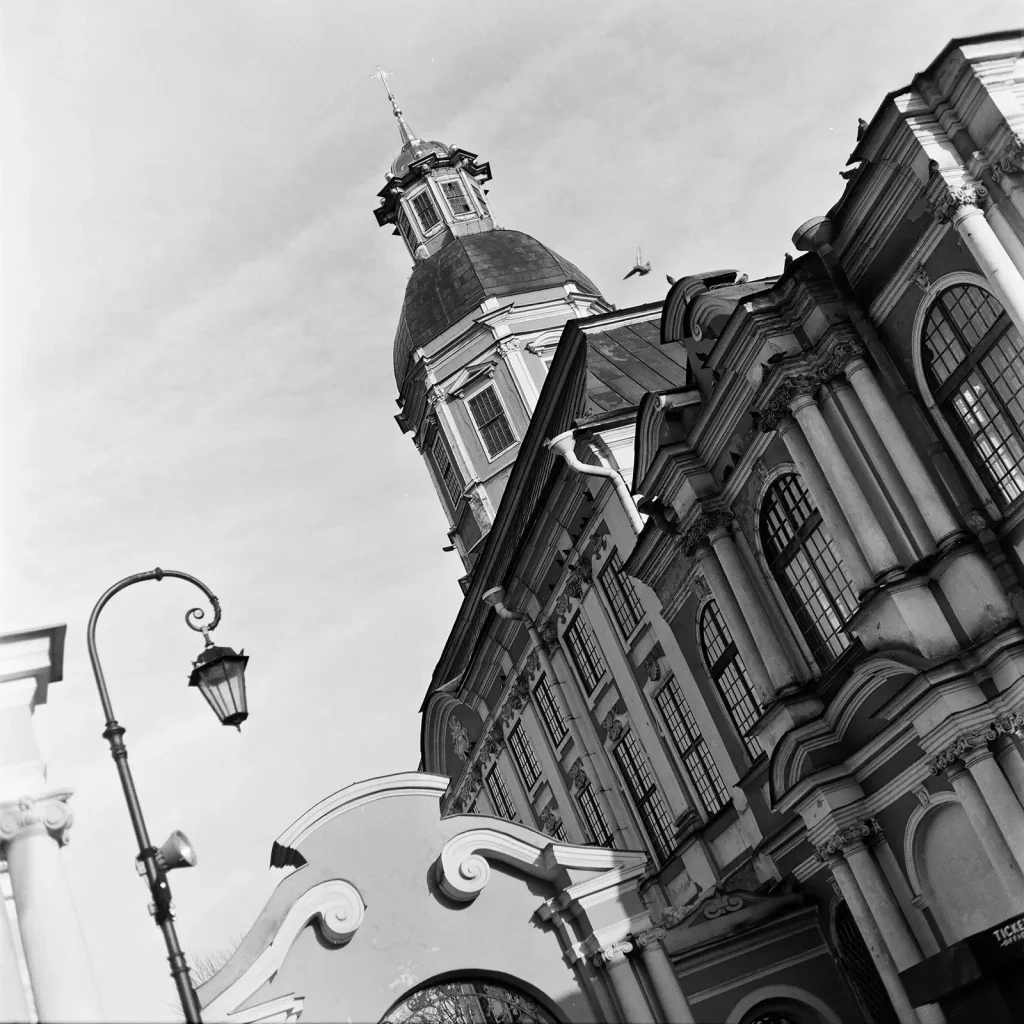
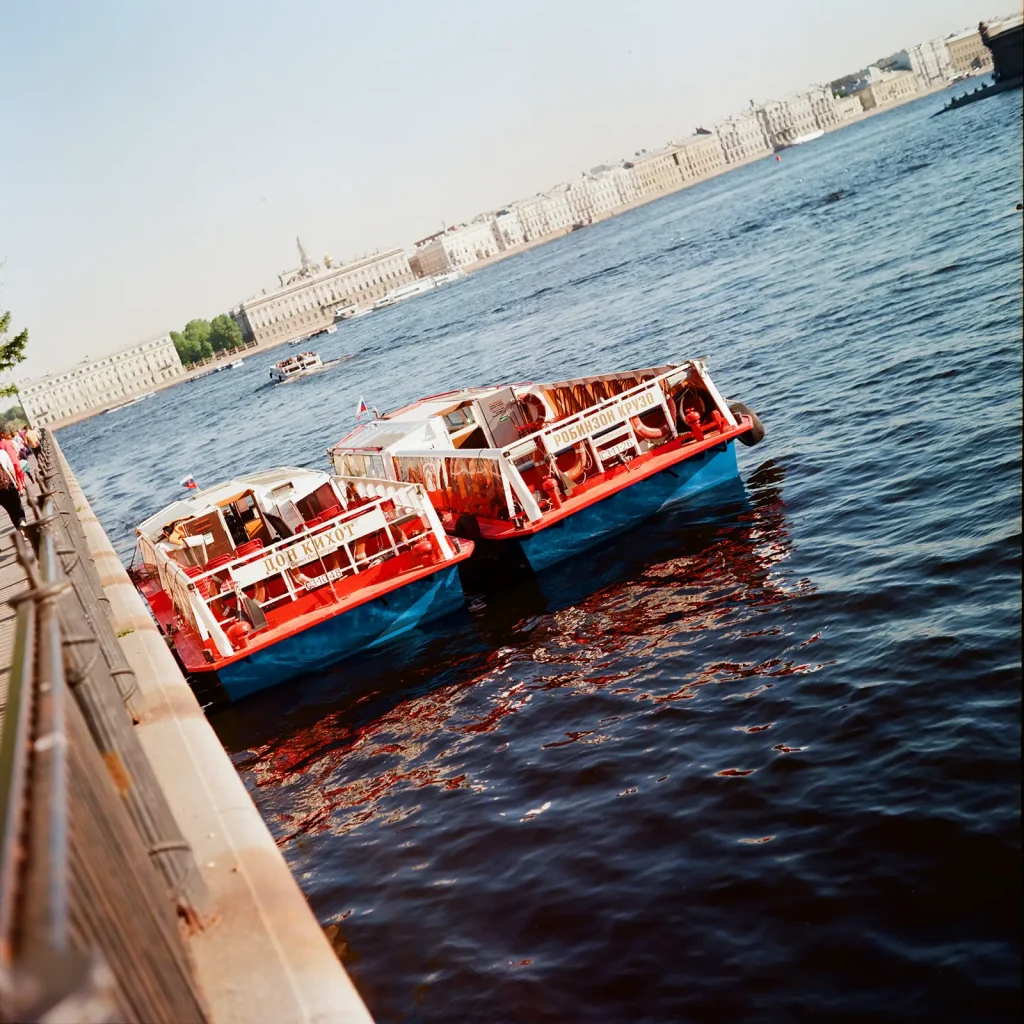
Unexpected Trouble:
The biggest problem was, quite surprisingly, aiming my camera. In waist-level viewfinders the image is mirrored, so moving the camera towards desired composition is… Counter-intuitive, to put it mildly. I knew about that, but I expected this problem to be quickly resolved with practice. Looks like something’s wrong with my brain, but no amount of training was of any help.
Luckily, there was a ready solution. I found a “porrofinder” for this camera – an add-on pentamirror module. One produced by Nippon Kogaku Corporation, better known as Nikon nowadays. It was very dirty inside, but very easy to disassemble and clean. Works like a charm.
Second problem is specific to this exact camera model. It doesn’t have an infinity stop. You must guess when the camera is at the infinity looking in the viewfinder or the scale on the side. Both methods are not very accurate. Split prism on the ground glass would be nice, but only the later or more expensive models had original interchangeable ground glass including the split prism options. Custom aftermarket glass for my Mamiya 220 did exist, but not anymore.
Stage II: 35mm rangefinder
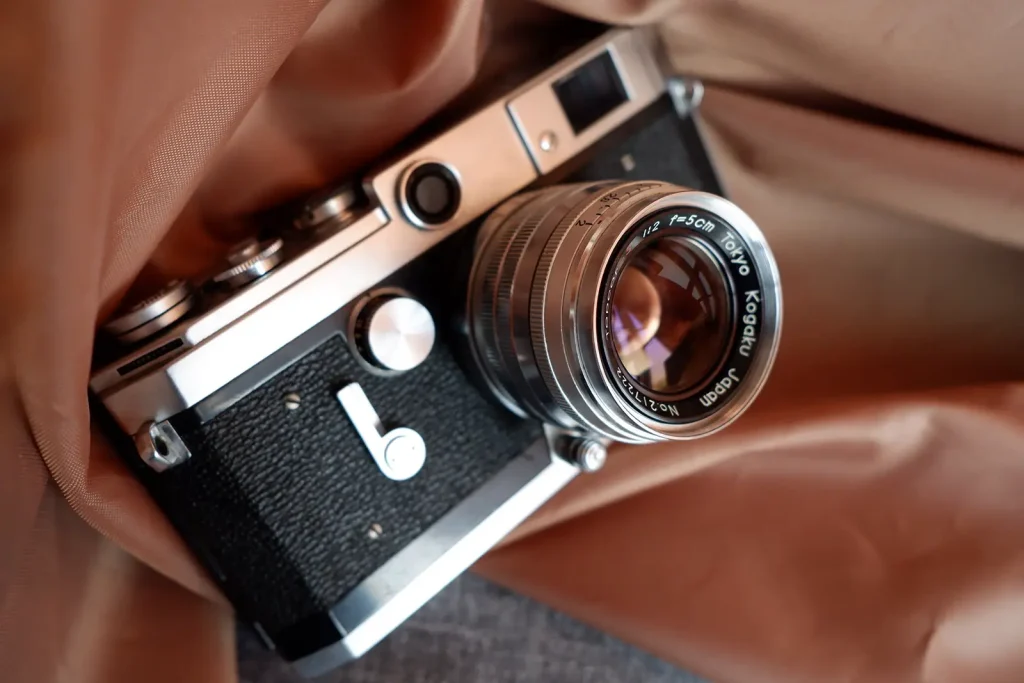
I like the images from Mamiya a lot. And I like the camera itself. It looks nice and is fun to use. People smile when they see me taking pictures. But it has an obvious weak spot: portability. I needed something smaller for my upcoming trip, as my dear wife said it’s either me going there or my brick of a camera. I had two days to find a suitable replacement and next to zero money to spend on it. Mission impossible?
At work we have a corporate message board, so I asked my colleagues if they have any old film camera I could borrow for a couple of weeks. Next day I had four cameras. And all their owners said I can keep that junk if I want. I’ve got a scale focus Smena-2 (broken), Kiev-4 with its Contax-mount Jupiter-8 lens (bent aperture blade), FED-3 with Industar-61 LTM (stuck focus ring, RF misaligned vertically) and Zorki-4 with Jupiter-8 LTM (fine lens but RF spot badly deteriorated). A big heap of scrap metal.
Then, just as I lost hope, a miracle happened. Some guy asked if I’m that strange person looking for old useless cameras. I said yes and he handed me over a gem. Canon VL2 rangefinder from the fifties, all shiny and in perfect working order. For the price of a bottle of beer. Wow.
I mounted Jupiter-8 from Zorki on it, checked rangefinder accuracy – perfect! – and praised God.
Expected Trouble:
I thought that focusing using rangefinder will be slow and inaccurate. Once again, there was a pleasant surprise. Focusing this way on my typical (more or less stationary) subjects is even easier than using ground glass. I actually experienced fewer errors with RF, than I did with modern digital systems. I can always see where exactly the focus is. Focus trapping allows me to capture fast-moving subjects, including those moving randomly at supersonic speeds (i.e. my daughter).
I was also afraid that old soviet lens is too bad. I checked it on a Fuji mirrorless with an adapter, and image corners were ugly up to about f/8. On 1.5 crop that is. But it was a problem of a digital camera, not the lens. Looks like a lot of those rangefinder lenses with short flange distance perform this way on digital sensors. With film it was just fine, punchy and contrasty, and sharp in the corners.
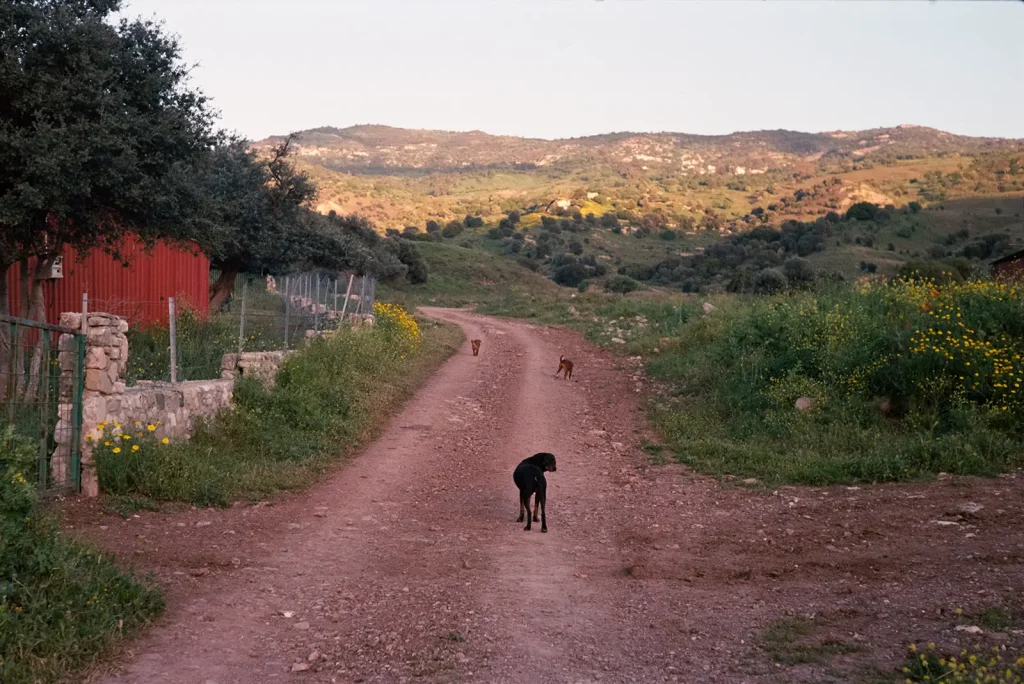
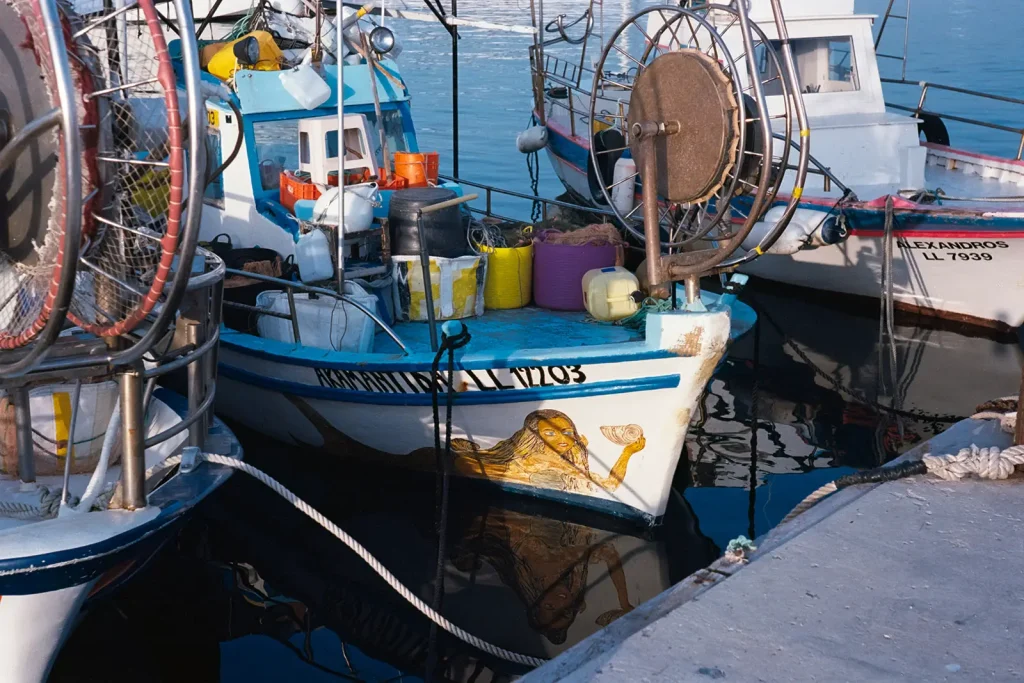
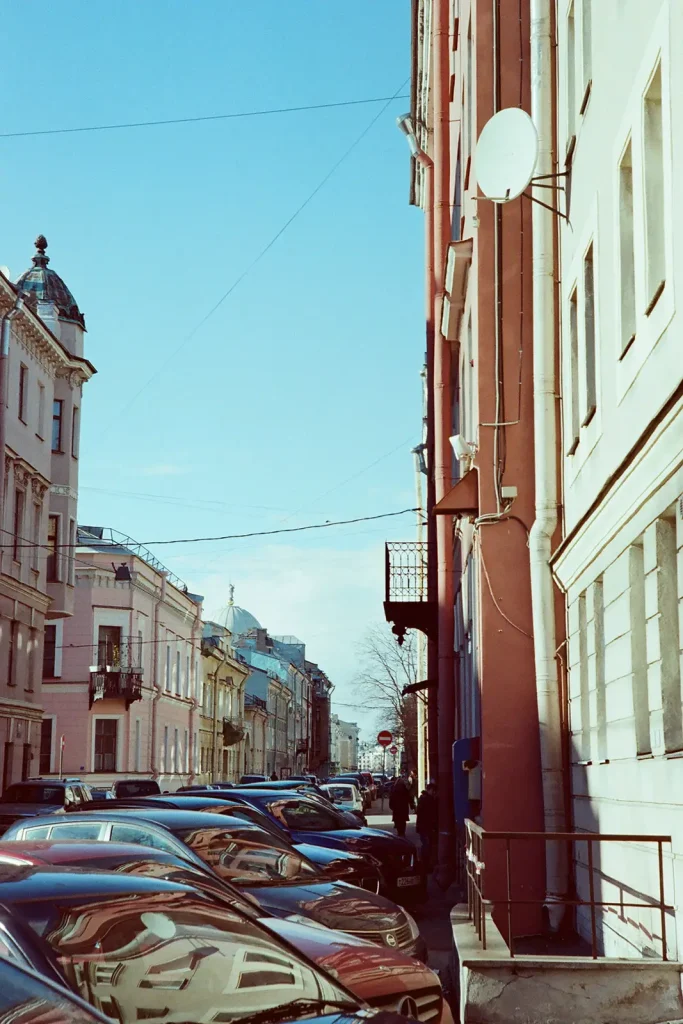
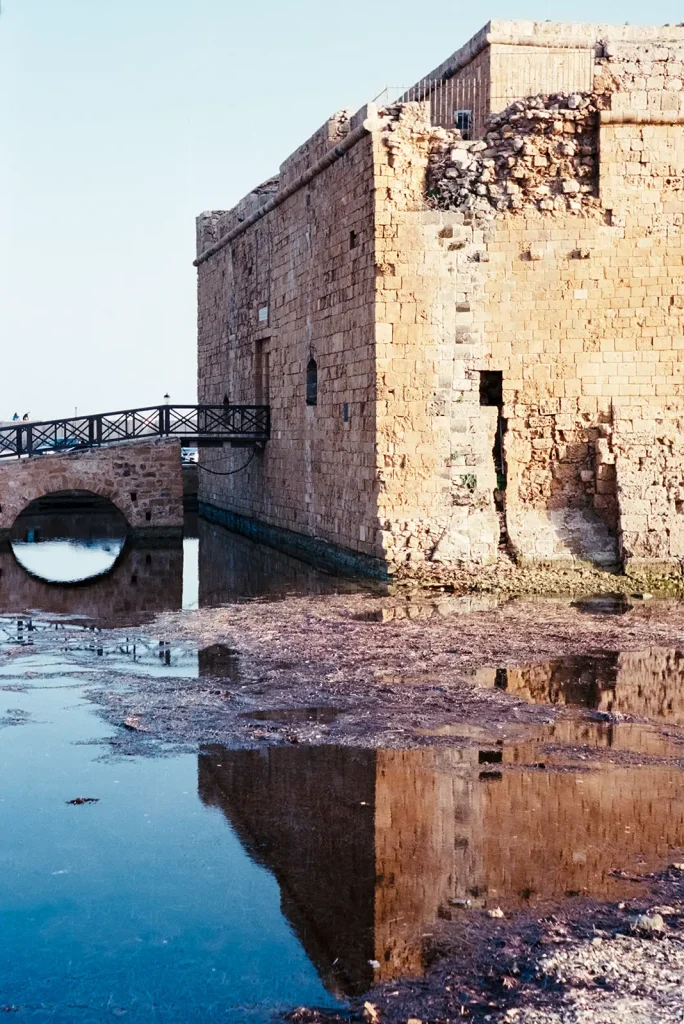
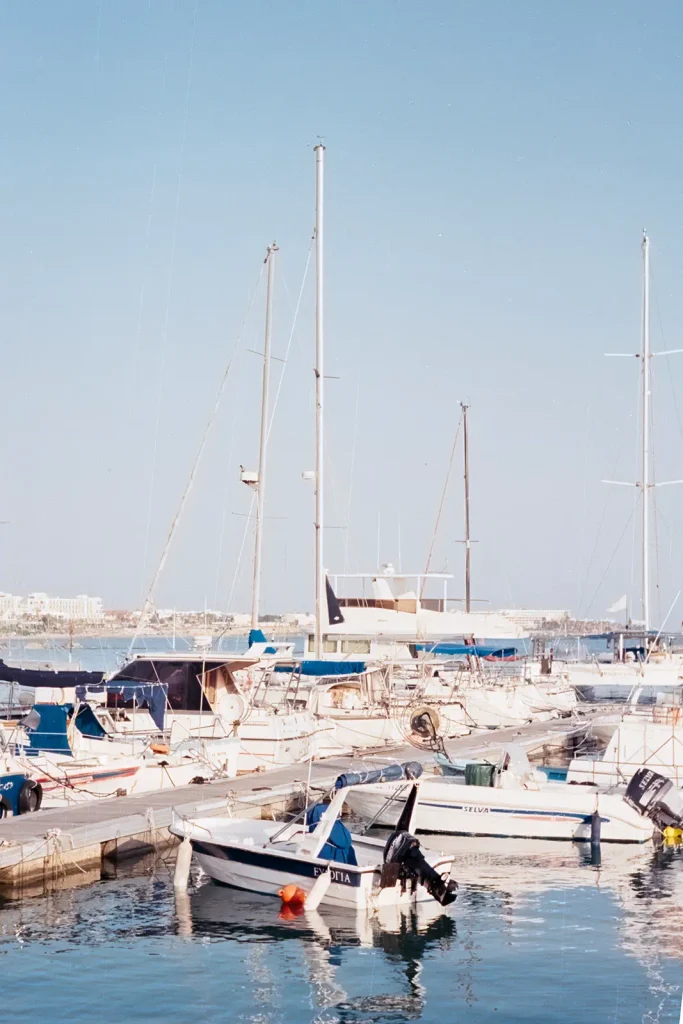
Unexpected Trouble:
The lens cap. It is very easy to take a shot with the cap on. And it is very embarrassing. Very. I found a solution when I saw an old compact camera, where lens cap blocked the viewfinder. I glued a strip of tape to the cap, long enough to see it through the viewfinder if the cap is on. And voila! No more blank frames!
Other than that, I can’t really find any problem with this setup and I love using it, just as much as the Mamiya.
Stage III: The Bellows
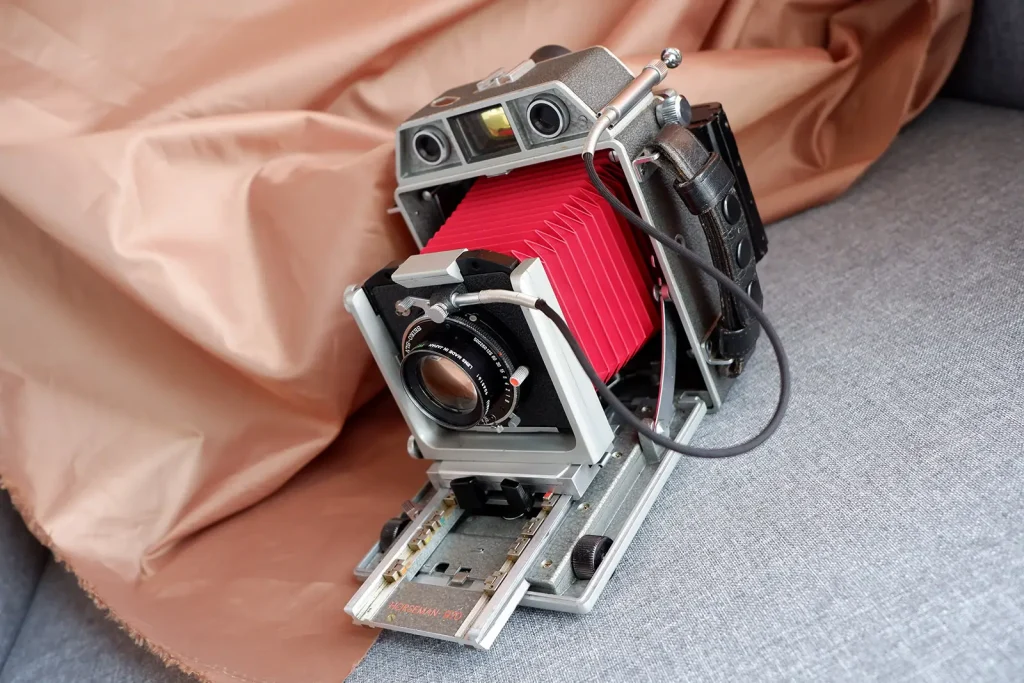
Soon I felt that my transition to film was going too smoothly. Looks like MF TLR wasn’t enough. And then I experienced the sudden attack of that infamous Gear Acquisition Syndrome. I saw an interesting camera: Horseman 970. It is a modular system, that can be configured as medium format or (using an increasing back) large format camera. And this one even has a rangefinder! The camera itself and one 6×9 roll film back were offered almost for free. The reason for that was simple. The bellows were badly damaged, gears were stuck, rangefinder out of alignment and film back missing a dark slide.
Temptation was too strong. I ordered this “kit”, 105/3.5 lens (45/1.5 equivalent for 35mm), rangefinder cam for it, and replacement bellows.
Expected Trouble:
I was afraid of starting the repair. I had no disassembly manual. Zero information available online. I’ve never tried repairing cameras before. But there was no reason be afraid. This camera is as simple as a Kalashnikov assault rifle. In a couple of hours, I replaced the bellows, cleaned and lubricated the gears, and the camera worked like new. Luckily nothing was broken, just stuck with rust and old lube turned to stone.
Rangefinder adjustment was even easier. I didn’t even have to remove the top cover. Set lens to infinity, unscrew one little bolt on front panel, turn another bolt inside until images coincide, done.
I was also afraid that the camera will be too unwieldy. But, once again, my fear was unfounded. It just works like a huge rangefinder. I don’t even need a tripod for it. The biggest problem was releasing the shutter, as you need to turn a small lever right beside the lens, very hard to find by touch. And very easy to leave fingerprints on the lens when trying to do that.
I resolved the problem when I got an original cable release. It smartly fits into a slot on either side of the camera, very comfortable to use.
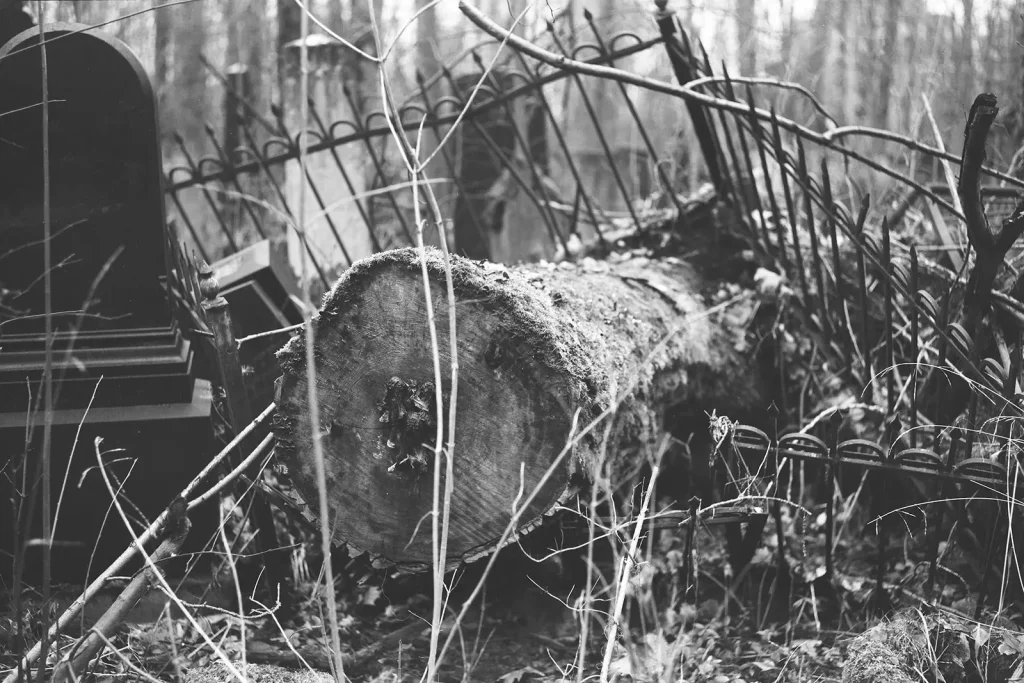
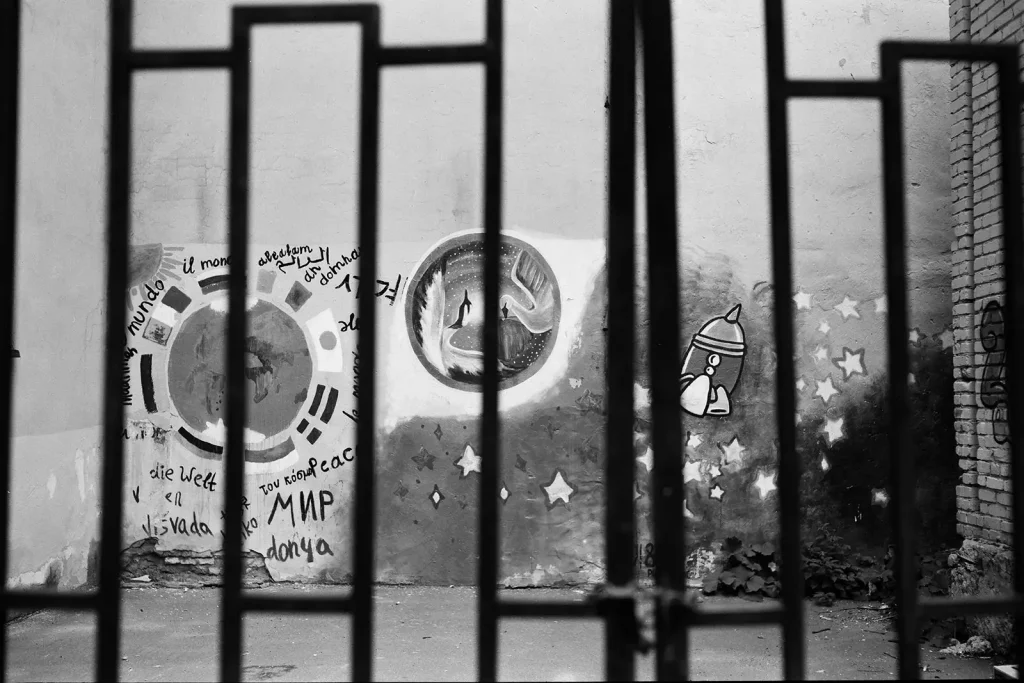
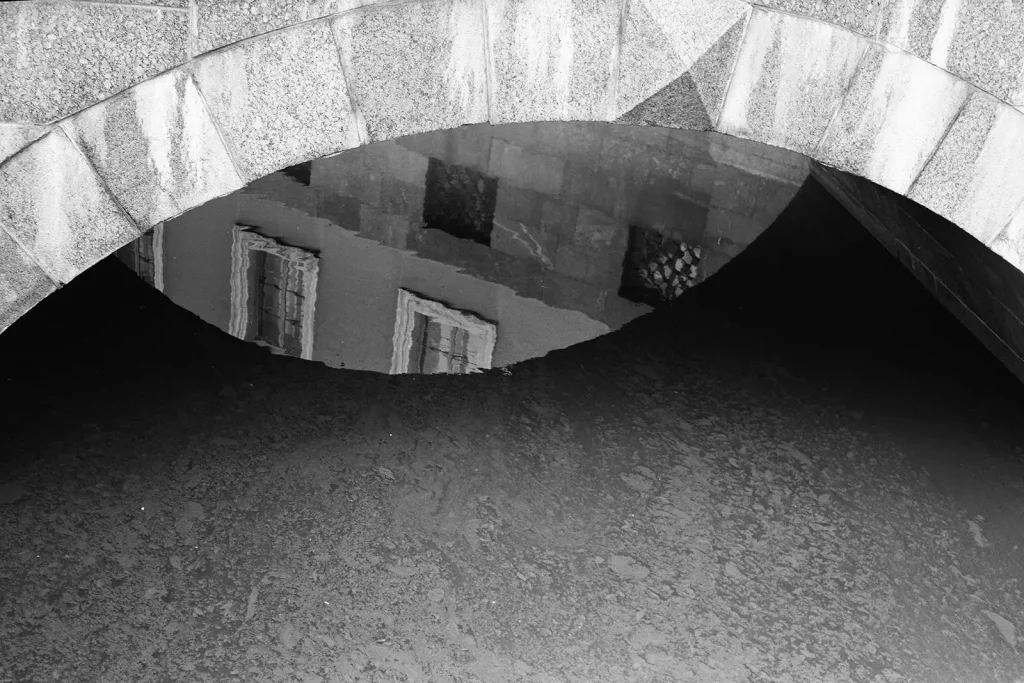
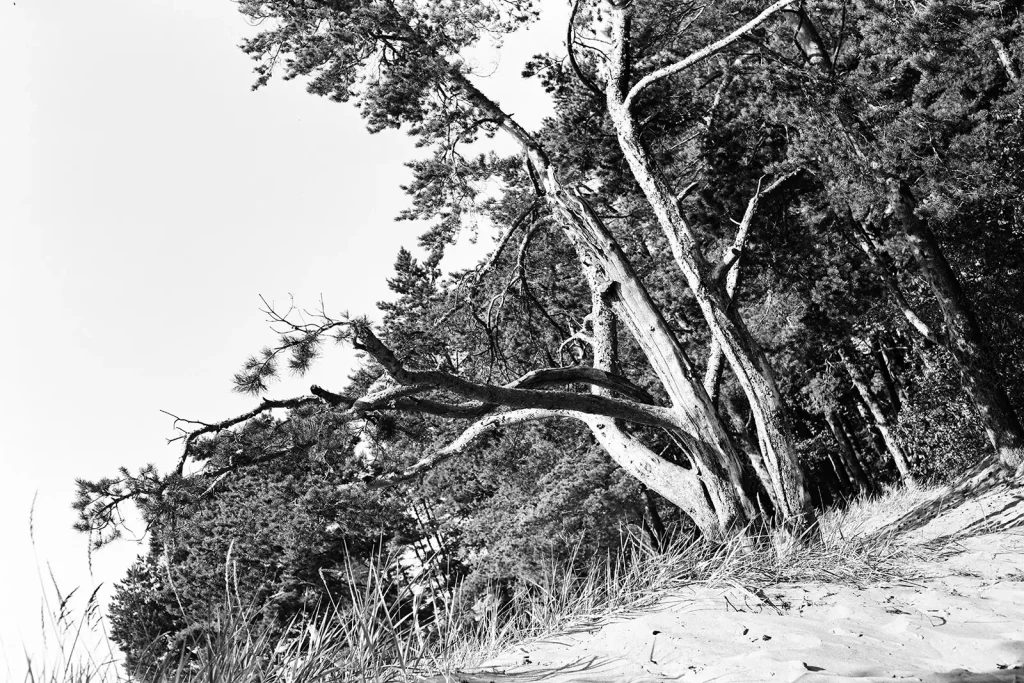
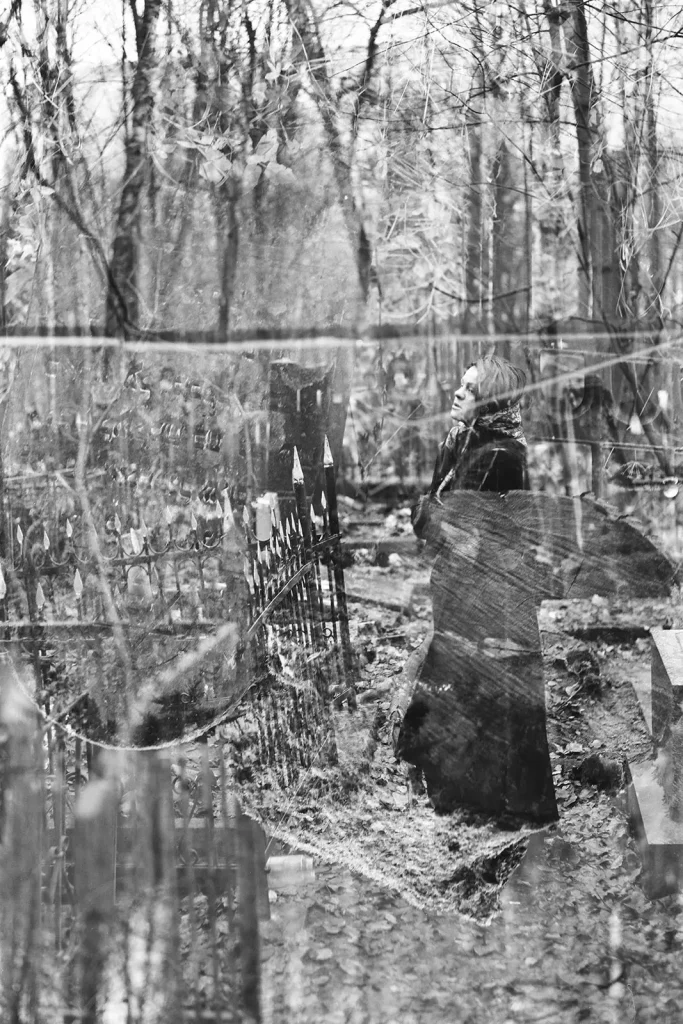
Unexpected Trouble:
It turned out, that system is not much of a system. Film backs are not interchangeable with later models. Camera is missing a ground glass module, that is never sold separately. And later models also don’t fit my older 970. Buying another camera just for ground glass sounds weird, but it looks like there is no other way to get one. Even cable releases for Topcor lenses are proprietary. So, system is coming together slower than expected. Without the ground glass I still haven’t tried camera movements. But even in its basic ‘’big rangefinder” mode the camera is surprisingly pleasant to use.
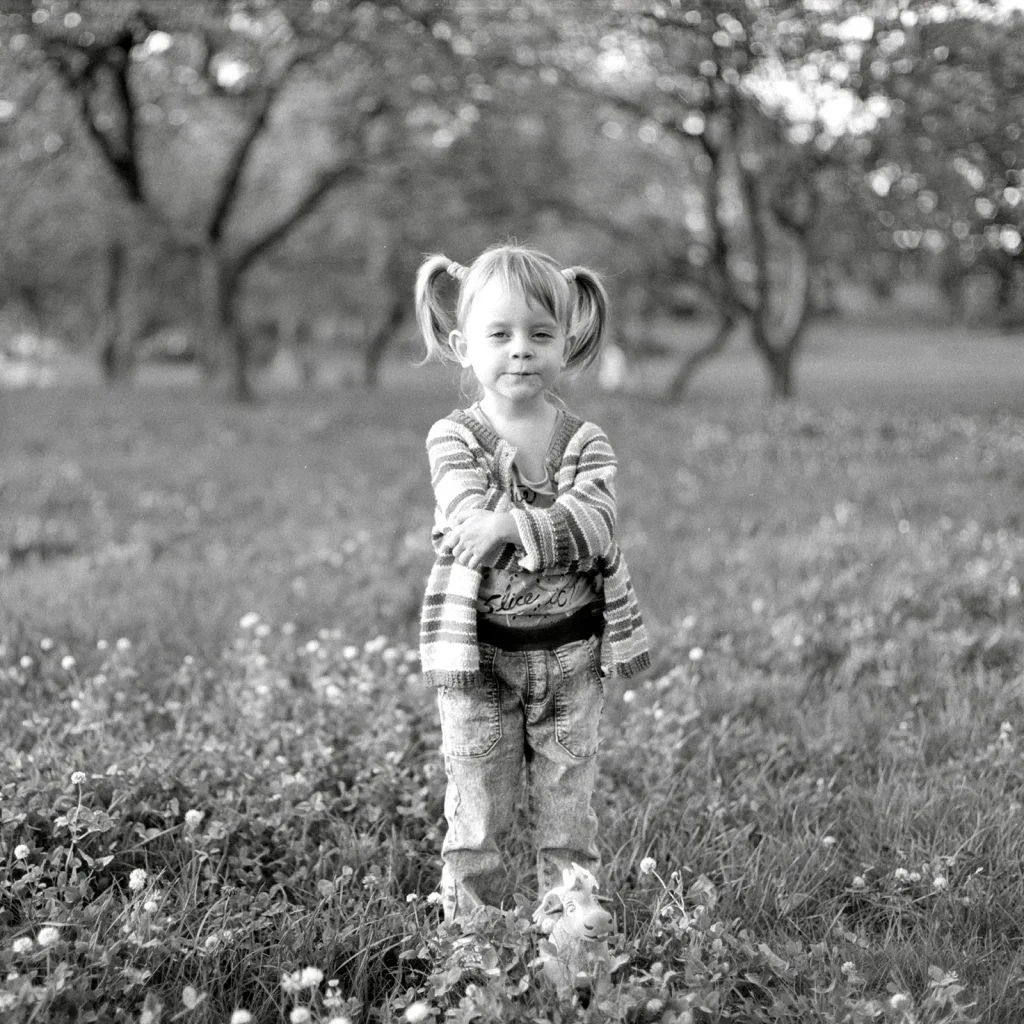
Summary
Don’t be afraid of shooting film. That is much easier than it seems to be. And even if it is challenging, that’s great! No pain, no gain. And when you prevail, the result will be worth all the effort.
That’s All, Folks!
If you want to see more of my work, steer here:
Instagram: @verfolger82
500px: https://500px.com/avjaxon
Share this post:
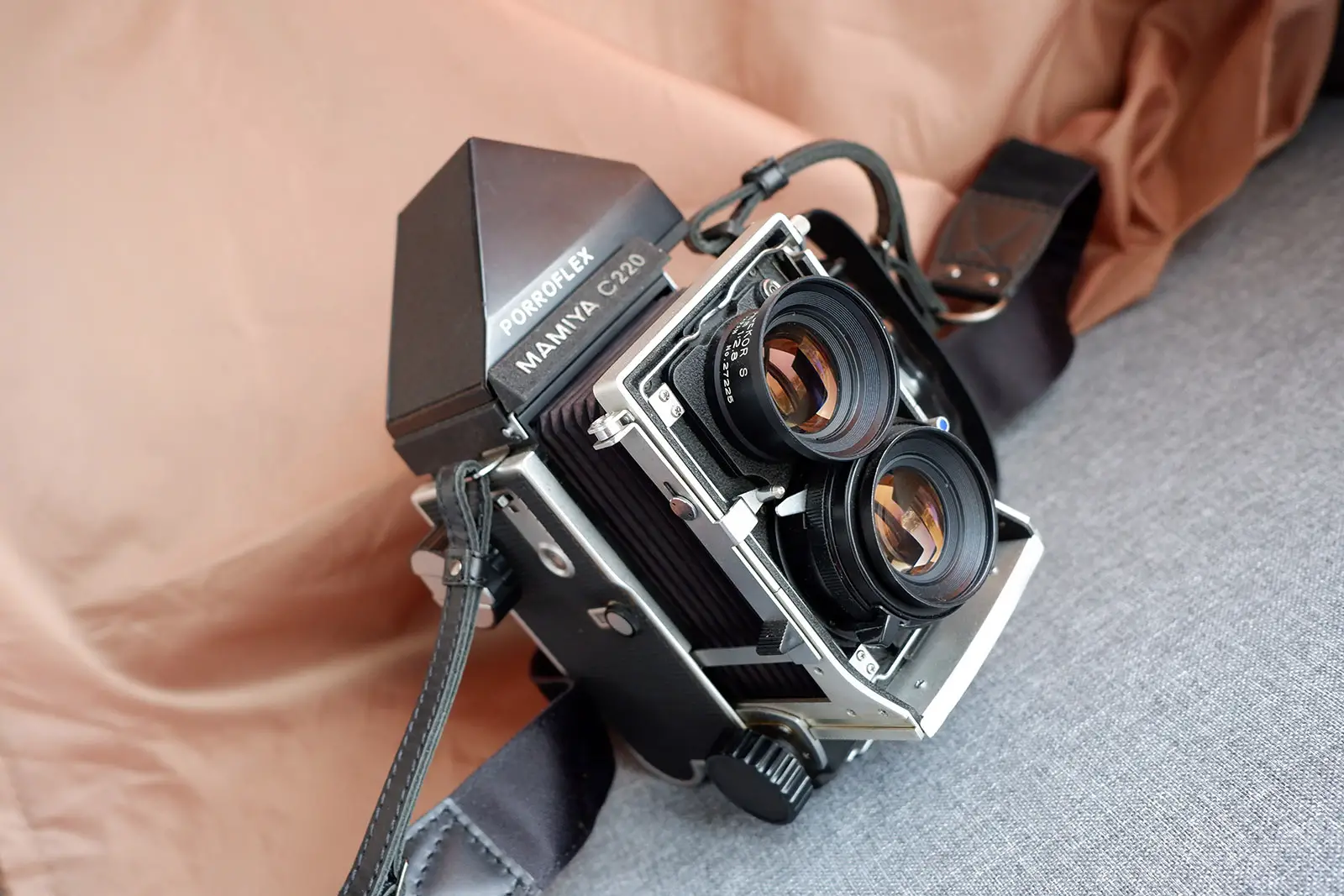








Comments
Ross Attix on Conversion to Film: The Expected and Unexpected – by Anton Yakovlev
Comment posted: 21/03/2020
If you add a ground glass on the Horseman, you will be using it for tripod mounted shots right? In that case, and one of the biggest advantages of having a bellows is the ability to swing and tilt the lens board for a better degree of control over focus. But unless you have had some direction on how to use that capability, it can be confusing.
So, if I may, let me quickly give a very basic intro. This can be much more involved and complicated, but all this is meant to be is a basic orientation.
Assume you have set up at some angle-other than perpendicular-to a wall or fence. In this example, think of that subject as being to your left. Assume you want to carry focus along that plane. Your film plane and the plane of that subject-think of them as lines-intersect somewhere to your left in an imaginary spot. You would loosen the lens board, and slowly rotate it counterclockwise until it’s plane intersects the other two.
That spot is imaginary, but this explanation makes it easier and more intuitive to know how to approach the focus. You will know you have hit the right correction when you see that wall/fence in sharp focus at both ends. Then if you stop down the aperture, the dof will extend toward you 1/3, and away from you 2/3 consistent with that new focus plane.
The same principle applies if you are tilting the lens. The ground is one plane, the film plane intersects it, tilting the lens board forward to interest those two will carry your dof deeper without having to stop down as far.
Again, thanks for showing us this work. It was a great way to start my day.
Comment posted: 21/03/2020
Wim van Heugten on Conversion to Film: The Expected and Unexpected – by Anton Yakovlev
Comment posted: 21/03/2020
Thank you for your great writing! Just ask myself how you know about the details of a Kalashnikov...
Regards,
Comment posted: 21/03/2020
Kodachromeguy on Conversion to Film: The Expected and Unexpected – by Anton Yakovlev
Comment posted: 21/03/2020
Comment posted: 21/03/2020
Jackson McDonald on Conversion to Film: The Expected and Unexpected – by Anton Yakovlev
Comment posted: 21/03/2020
Comment posted: 21/03/2020
Nick Lyle on Conversion to Film: The Expected and Unexpected – by Anton Yakovlev
Comment posted: 21/03/2020
Khürt Louis Williams on Conversion to Film: The Expected and Unexpected – by Anton Yakovlev
Comment posted: 21/03/2020
Des McSweeney on Conversion to Film: The Expected and Unexpected – by Anton Yakovlev
Comment posted: 21/03/2020
Comment posted: 21/03/2020
Gil Aegerter on Conversion to Film: The Expected and Unexpected – by Anton Yakovlev
Comment posted: 21/03/2020
Hamish Gill on Conversion to Film: The Expected and Unexpected – by Anton Yakovlev
Comment posted: 21/03/2020
Comment posted: 21/03/2020
Harry Machold on Conversion to Film: The Expected and Unexpected – by Anton Yakovlev
Comment posted: 21/03/2020
Hamish was the man, without knowing, who got me falling for an CCD Leica...thank you for that, Hamish...
I would fall for all of your gear, especially the Canon with the Topcor lens; it is a long time that we had one at Leicashop here in Vienna. But like you, I also love the Mamiya 6x6 so much. your pictures are composed in a very stylish way; you are a true film photographer, Anton. I educated myself to take digital images the way I take pictures on film; very selectively, keeping in mind that a roll of 120 film has 12 exposures only...
All the best, Anton and keep enjoying your little daughter; she has a strong will I guess...
The GAS I admit, I will suffer from til my last moment...and with great delight!
Best for tonight Harry
Comment posted: 21/03/2020
Neil Oxley on Conversion to Film: The Expected and Unexpected – by Anton Yakovlev
Comment posted: 24/03/2020
I have the Horseman too but I find the rangefnder almost impossible to use as I wear glasses. I also had a Mamiya C220.
All those pictures were processed and scanned by a lab, yes? Do you find this expensive in your country?
Comment posted: 24/03/2020
Comment posted: 24/03/2020
Comment posted: 24/03/2020
Xiong Chiamiov on Conversion to Film: The Expected and Unexpected – by Anton Yakovlev
Comment posted: 26/03/2020
I fought off GAS so well for my digital equipment but film caught me by surprise and breached all the defenses.
Comment posted: 26/03/2020
Michael Gayler on Conversion to Film: The Expected and Unexpected – by Anton Yakovlev
Comment posted: 27/03/2020
It was nice to see Phaphos Castle in there!
Comment posted: 27/03/2020
Nicholas on Conversion to Film: The Expected and Unexpected – by Anton Yakovlev
Comment posted: 08/01/2023